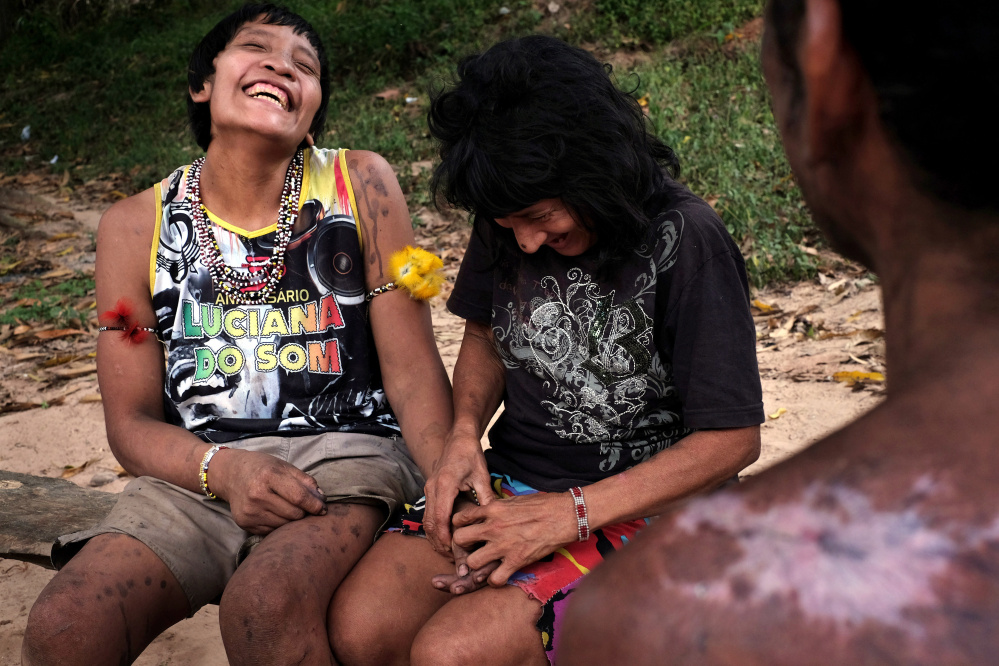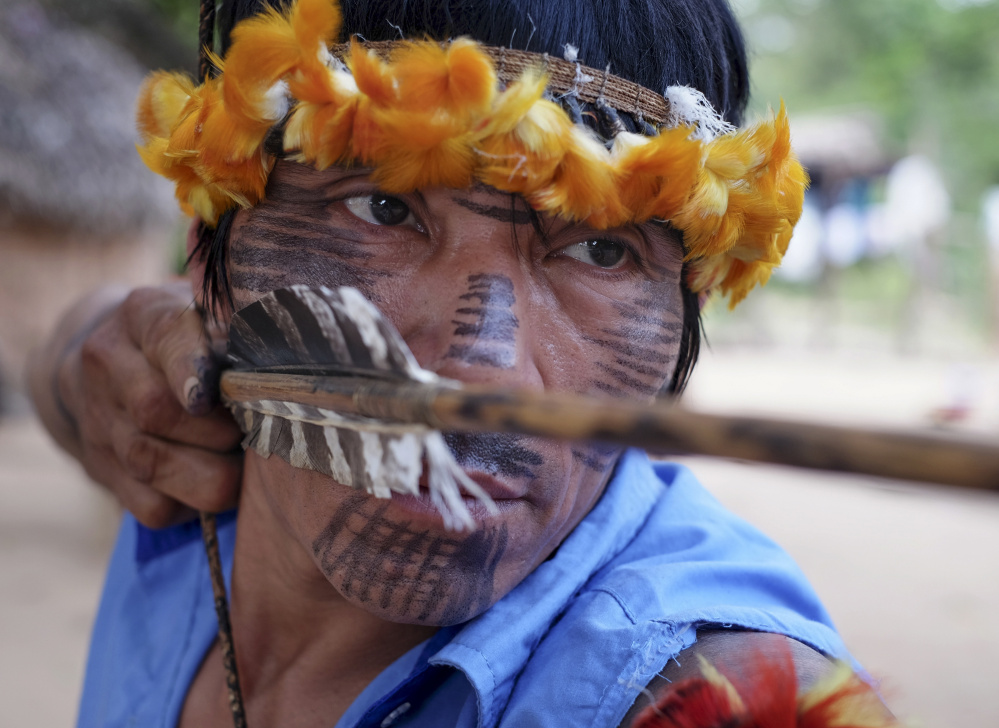CARU INDIGENOUS LAND, Brazil — Wirohoa does not have a driver’s license, a television or a cellphone. He does not know how old he is and walks barefoot around the indigenous village of Tiracambu, in the Brazilian Amazon.
Last December he, his mother Jakarewãja and his aunt Amakaria left the forest where they had lived their whole lives as nomadic hunter-gatherers, isolated from modern society.
“We were very happy living in the forest,” said Wirohoa, who does not use a surname, and is estimated to be around 25.
The family’s move to a village brought decidedly mixed results. The two women caught tuberculosis; like other hunter-gatherers, their immune systems are especially susceptible to modern diseases. Wirohoa found a wife.
The trio’s story illustrates the decreasing options available to the roughly 100 hunter-gatherers of their tribe, the Awá, caught between the difficulties of surviving in the diminishing forest and the dangers posed by illness and development in the contemporary world outside.
The Awá have been called the most endangered tribe on Earth because of the threat posed by illegal loggers to their forested hunting grounds. Most of their population of around 450 people live in Caru, a 668-square-mile reserve created in 1982, and an adjacent reserve called Awa. Post journalists were given rare permission by the tribe to visit the reserves.
THEIR WORLD WAS THE FOREST
Until recently, Wirohoa, his aunt Amakaria, believed to be in her early 50s, and mother Jakarewãja, in her late 30s, did not know they were living on an indigenous reserve. The world, for them, was the forest.
But that forest was no longer safe for them. Wirohoa could hear the terrifying sound of chain saws as loggers edged closer toward their wood and palm-frond hut. Trees around them were marked for felling. When a hunting party from one of the villages on the reserve came across the trio, they were persuaded it was safer to come out of the wild.
Within days of reaching Awa village, the two women had fallen sick with colds. In April they were diagnosed with tuberculosis, and all three were airlifted to São Luis, the capital of this state, Maranhão. The two women have been convalescing in a replica of their forest hut, built on the grounds of a hospital.
Wirohoa, whose name means “Big Bird” or “Hawk,” has had a far happier experience. He is enjoying the first romantic relationship of his life with Ximirapia, an older woman who the tribe decided should be his wife. A partner was difficult to find in the forest, where he lived with just his aunt and mother. His father died before he was born.
“I didn’t have a wife before. Now I do. I am really happy!” said Wirohoa, as he and Ximirapia kissed and cuddled. “I like it so much that when she goes somewhere I cry.”
Wirohoa smiles a lot. Awá villagers in Tiracambu said he has settled into life there. He has developed a small pot belly and still goes on hunting trips, often for days at a time. But the modern world presents threats.
The tribe’s hunting – its key source of sustenance, though members also do some farming – is threatened by plans to expand a railroad that runs just outside the reserve. Enormous freight trains carrying iron ore roar down the track 12 times a day. With a second track, and an increase in the number of trains, prey will appear even less frequently, Awá leaders say.
Wirohoa could hear the train in the distance when he lived in the forest. The first time he saw it, Ximirapia said, he was terrified, and she hugged him tight.
SPORADIC INTERACTIONS
The Awá were first mentioned in an 1853 report by a provincial official. They had sporadic interactions with local farmers over the next century, but Brazil’s indigenous agency only made formal contact in 1973.
Over the following years, most tribal members were resettled in Amazon villages. Scores died, their immune systems unable to cope with common diseases. Brazil subsequently established a policy of not seeking to communicate with the remaining hunter-gatherers. The country now has around 80 “non-contacted” tribal groups, according to Survival, a British group that defends indigenous people’s rights.
Today Wirohoa and Ximirapia share a hammock in one of the handful of mud-brick and tin-roofed houses in their village. They share the dwelling with a tortoise, birds, forest rodents, two species of monkey, Ximirapia’s other husband, Kamajrua, and half a dozen other people. Polygamy and polyandry are part of Awá culture.
Wirohoa is no longer scared of the iron ore train. But Diniz, who has met him, said his smiles mask uneasiness.
“He is completely disorientated,” she said. “He has no choice. Either he stays in this strange world, or he goes back to danger.”
Send questions/comments to the editors.




Success. Please wait for the page to reload. If the page does not reload within 5 seconds, please refresh the page.
Enter your email and password to access comments.
Hi, to comment on stories you must . This profile is in addition to your subscription and website login.
Already have a commenting profile? .
Invalid username/password.
Please check your email to confirm and complete your registration.
Only subscribers are eligible to post comments. Please subscribe or login first for digital access. Here’s why.
Use the form below to reset your password. When you've submitted your account email, we will send an email with a reset code.